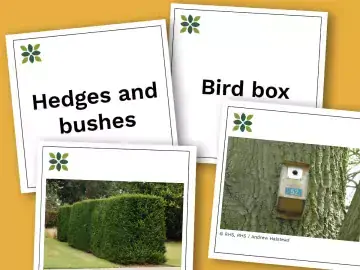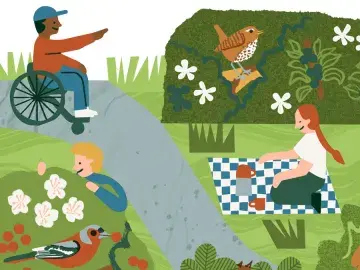
Water permeability
What happens to your school ground in heavy rain? Does all the water pool in one place? What materials do you have in your school grounds that will help rainwater soak in?
This activity will allow learners to compare different surfaces in nature, and how they can contribute to reducing flooding. By exploring their site and experimenting with water, learners will notice how water interacts with each surface – does the water disappear? Does it pool and go somewhere else?
This introduces the idea that some surfaces are better at absorbing water than others, starting a discussion about how we can adapt to properly face the challenges of climate change.
Preparation
What you need
- Small syringes (20ml) for each learner, pair or group
- Water
- Bucket
- Optional: Stopwatches
Location
Outdoors
Useful guidance
Resources
Step by step
- Before starting the activity, ask learners to form a circle and ask them, ‘What happens to the water when it rains?’ - let learners share their thoughts before introducing the activity.
- You could then start by asking learners to guess which surface in your learning site will be the best at absorbing water. Make a note of their predictions to discuss later.
- Each learner will need a syringe, or they could work in pairs or small groups. Fill a bucket with water and ask learners to fill their syringes.
- Ask learners to squeeze a little water onto each different surface around the site, to compare how water behaves on each material. Learners could use stopwatches to time how long it takes water to soak into the ground, or they could count (“1 elephant, 2 elephant, 3 elephant...”)
- After each different surface has been tested, ask learners to discuss which one was the best at absorbing water – why do they think this might be? Did this answer match the surface you thought at the start of the activity?
Reflection
Did the water soak into every surface? What else might impact how quickly the water soaks in?
Curriculum links
This activity can be used to support curriculum knowledge and skill development in science and understanding the world, alongside enhancing nature education, with age appropriate adaptations.
What to try next

Garden detectives
Begin activity
Guess the habitat
Begin activity